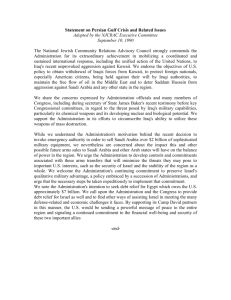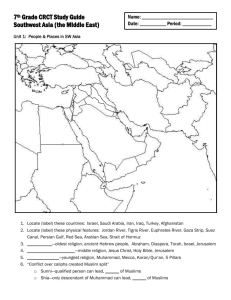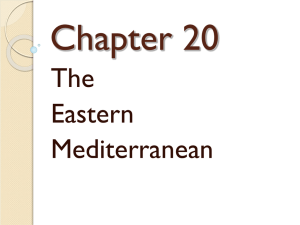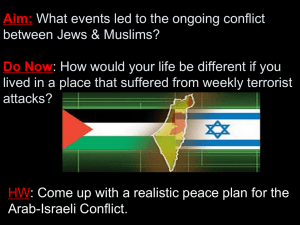CHAPTER 20 SECTION 1
advertisement
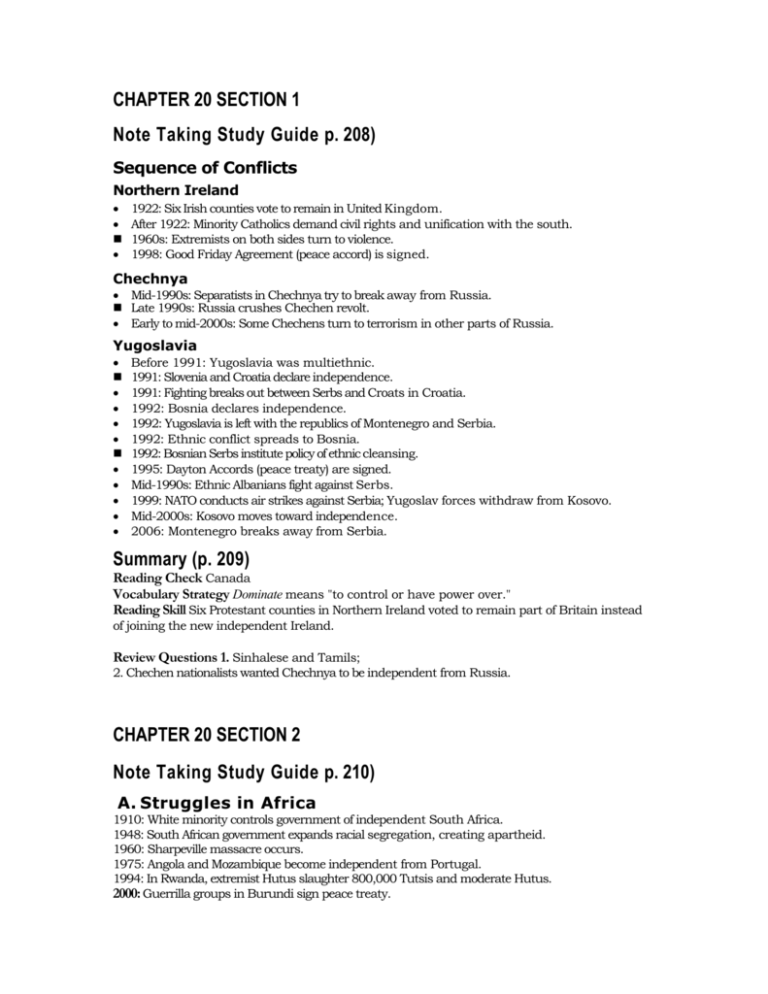
CHAPTER 20 SECTION 1 Note Taking Study Guide p. 208) Sequence of Conflicts Northern Ireland 1922: Six Irish counties vote to remain in United Kingdom. After 1922: Minority Catholics demand civil rights and unification with the south. 1960s: Extremists on both sides turn to violence. 1998: Good Friday Agreement (peace accord) is signed. Chechnya Mid-1990s: Separatists in Chechnya try to break away from Russia. Late 1990s: Russia crushes Chechen revolt. Early to mid-2000s: Some Chechens turn to terrorism in other parts of Russia. Yugoslavia Before 1991: Yugoslavia was multiethnic. 1991: Slovenia and Croatia declare independence. 1991: Fighting breaks out between Serbs and Croats in Croatia. 1992: Bosnia declares independence. 1992: Yugoslavia is left with the republics of Montenegro and Serbia. 1992: Ethnic conflict spreads to Bosnia. 1992: Bosnian Serbs institute policy of ethnic cleansing. 1995: Dayton Accords (peace treaty) are signed. Mid-1990s: Ethnic Albanians fight against Serbs. 1999: NATO conducts air strikes against Serbia; Yugoslav forces withdraw from Kosovo. Mid-2000s: Kosovo moves toward independence. 2006: Montenegro breaks away from Serbia. Summary (p. 209) Reading Check Canada Vocabulary Strategy Dominate means "to control or have power over." Reading Skill Six Protestant counties in Northern Ireland voted to remain part of Britain instead of joining the new independent Ireland. Review Questions 1. Sinhalese and Tamils; 2. Chechen nationalists wanted Chechnya to be independent from Russia. CHAPTER 20 SECTION 2 Note Taking Study Guide p. 210) A. Struggles in Africa 1910: White minority controls government of independent South Africa. 1948: South African government expands racial segregation, creating apartheid. 1960: Sharpeville massacre occurs. 1975: Angola and Mozambique become independent from Portugal. 1994: In Rwanda, extremist Hutus slaughter 800,000 Tutsis and moderate Hutus. 2000: Guerrilla groups in Burundi sign peace treaty. 2004: Southern rebels sign a peace agreement with Sudan's government; ethnic conflict spreads to Darfur. B. Ethnic Conflicts in Africa Southern Sudan: Laws are passed that discriminate against some ethnic groups; Rebels in the south battle the north. Darfur: Ethnic conflict spreads; Militias unleash terror. Burundi: Tensions between Tutsis and Hutus grow. Rwanda: Hutus kill Tutsis and moderate Hutus; Eight million lose their homes to mobs. Summary (p. 211) Reading Check Angola and Mozambique Vocabulary Strategy Stipulated means "required; specified." Reading Skill after the protest in Sharpeville Review Questions 1. Races were legally separated; non-whites faced many restrictions; laws banned marriages between races; restaurants, beaches, and schools were segregated. 2. After independence, tensions grew between the two main groups, minority Tutsis who dominated and majority Hutus; extremist Hutu leaders killed hundreds of thousands of Tutsis and moderate Hutus. CHAPTER 20 SECTION 3 Study Guide p. 212) Middle Eastern Conflicts Arab-Israeli Conflict 1948: Israel is founded. 1956: Arab-Israeli war is fought. 1960s: PLO leads struggle against Israel. 1967: Arab-Israeli war is fought; Israel occupies lands formerly held by Arab countries. 1973: Arabs attack Israel on Yom Kippur. 1979: Egypt and Israel sign peace accord. 1993: Oslo Accord 1994: King Hussein of Jordan makes peace with Israel. Early 2000s: U.S.-designed "road map" offers some hope for peace. Early 2000s: Israel forces Jewish settlers to leave Gaza. 2004: Yasir Arafat dies; Mahmoud Abbas is elected his successor. Mid2000s: Fighting erupts among Palestinians, between Palestinians and Israel, and between Israel and Hezbollah in Lebanon. - Lebanon 1975: Civil war begins. 1982: Southern Lebanon is invaded by Israel; Syria occupies eastern Lebanon. 2006: Hezbollah attacks Israel from southern Lebanon; Israeli response brings widespread destruction. Iraq 1979: Saddam Hussein comes to power. 1980s: Iran-Iraq War is fought. 1990: Iraq invades Kuwait. 1991: U.S.-led coalition liberates Kuwait and crushes Iraqi forces. Early 2000s: U.S. and Britain charge Saddam Hussein with having WMDs. 2003: United States attacks Iraq and overthrows Saddam Hussein; U.S. forces occupy Iraq. 2005: First national elections are held. Mid2000s: Insurgents attack Shiiteled government, and civil war threatens Iraq. - - Summary (p. 213) Reading Check Shiite Muslims and Kurds Vocabulary Strategy Diverse means "multiple, varied, different." Reading Skill Students will circle "In response." Review Questions 1. It took control of them after Arab countries attacked Israel in 1967. 2. Kuwait was liberated and Iraqi forces crushed; Saddam Hussein remained in power; United States, France, and Britain set up no-fly zones; UN tried to keep Saddam Hussein from building WMDs.



